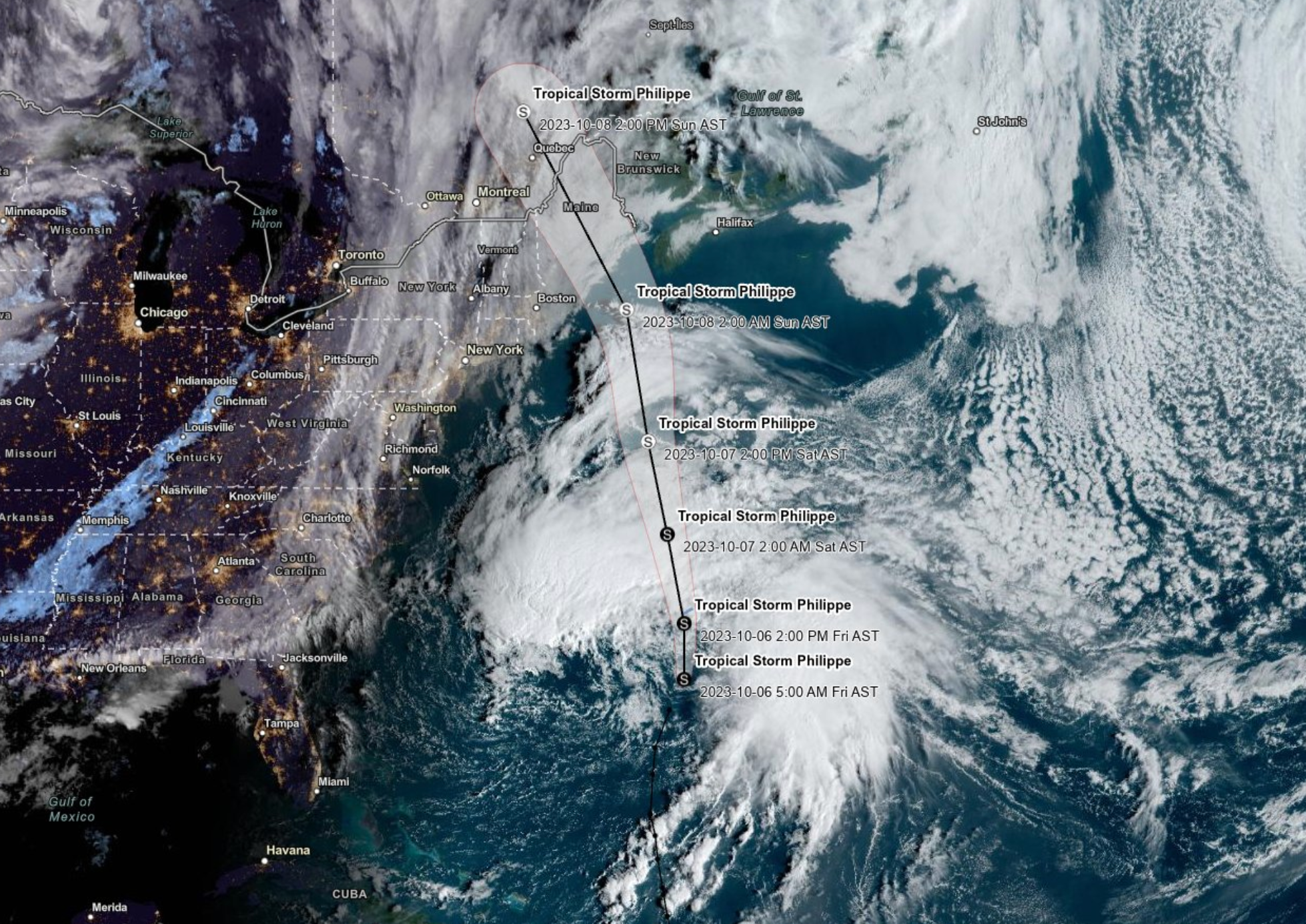Philippe weakens to post-tropical cyclone on path towards New England
Philippe is expected to reach the coast of Nova Scotia, New Brunswick or eastern Maine on Saturday night into Sunday
Your support helps us to tell the story
From reproductive rights to climate change to Big Tech, The Independent is on the ground when the story is developing. Whether it's investigating the financials of Elon Musk's pro-Trump PAC or producing our latest documentary, 'The A Word', which shines a light on the American women fighting for reproductive rights, we know how important it is to parse out the facts from the messaging.
At such a critical moment in US history, we need reporters on the ground. Your donation allows us to keep sending journalists to speak to both sides of the story.
The Independent is trusted by Americans across the entire political spectrum. And unlike many other quality news outlets, we choose not to lock Americans out of our reporting and analysis with paywalls. We believe quality journalism should be available to everyone, paid for by those who can afford it.
Your support makes all the difference.Tropical Storm Philippe picked up speed on Friday and deluged parts of the Caribbean on a path toward New England and Atlantic Canada.
A tropical storm warning was in effect for Bermuda amid 50mph winds and heavy downpours from Philippe’s outer bands. One to three inches of rain is expected across Bermuda on Friday, leading to possible flash flooding.
By Friday afternoon, Philippe weakened to a post-tropical cyclone but still posed a risk of flash flooding in parts of the Northeast this weekend, according to the National Hurricane Center (NHC).
A turn toward the north-northwest is forecast by early Sunday and Philippe is expected to reach the coast of Nova Scotia, New Brunswick or eastern Maine on Saturday night into Sunday, NHC reported.
Parts of New York and New England could see one to three inches of rain this weekend with up to five inches expected in some areas. Isolated to scattered instances of urban and flash flooding are expected, forecasters said.
A flood watch was issued for New York City from Friday until Saturday evening with heavy rain possibly resulting in flooding particularly in low-lying areas or places with poor drainage.
Southeast Canada will also see one to three inches in areas with local amounts of five inches.
Large swells from Philippe, and another weather system, will continue to impact Bermuda’s coastline in the coming days.

Those swells will reach the US southeast and spread north along the east coast to Atlantic Canada in the coming days, causing “life-threatening surf and rip currents”.
Earlier this week, communities in Guadeloupe lost power and running water while schools were closed in Antigua and Barbuda, St Martin and St Barts due to the storm.
On a hotter planet, more water vapor is held in the atmosphere, meaning a greater chance of intense rainfall from storms.

In the US Northeast, the volume of rain in very heavy events increased by 55 per cent from 1958 to 2016, according to meteorologist Terran Kirksey, from the nonprofit Climate Signals. Much of that increase has taken place since 1996 due to the human-driven climate crisis.
The latest report from the UN’s top climate science panel found that the frequency of “1-in-10 year” extreme rainfall events has increased 30 per cent globally.
In addition, climate change is causing sea level rise which compounds the danger of storm surge.




Join our commenting forum
Join thought-provoking conversations, follow other Independent readers and see their replies
0Comments